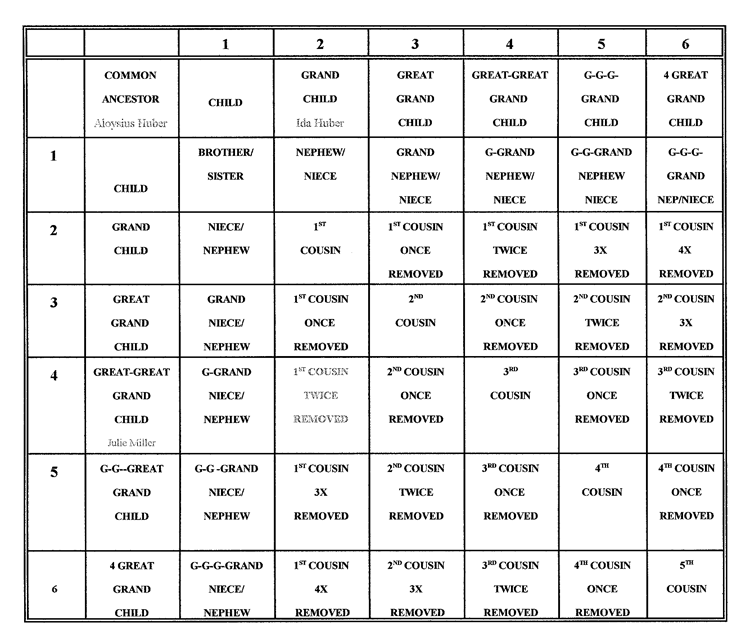What is a second cousin, twice removed?
14 December 2002
When your family gets together this holiday season, it’s inevitable that someone will get nostalgic and start to tell stories about old Uncle Ed or asking “do you remember the Christmas cousin Hal...?” And sooner or later the conversation will get around to the question of how cousin Hal is related.
I get asked questions concerning relationships quite often. It’s something that can be difficult for both beginning and experienced genealogist to understand. How do you know if someone is a first or second cousin and what does “removed” mean?
The term “cousin” is often used generically to describe any relative that is not in one’s immediate family. In truth, a cousin is a person who is related by descent in a splitting line from a known common ancestor. The common ancestor is the first ancestor that is shared in the direct line of descent. The direct line of descent is a straight line, such as a great-grandparents, grandparents and parents.
Most people know that the children of their parent’s siblings are their cousins. The common ancestor is a grandparent. This is called first cousin because they have the same grandparents and the cousins are in the same generation. And so it goes down the line, second cousins are people who share a great-grandparent, and third cousins share a great-great grandparent. This can continue indefinitely. The important factor is that they are both in the same generation from a common ancestor. For example, Dorothy Schneider is the granddaughter of Catherine Baumgartner. Catherine Baumgartner is my great-aunt. I want to know the relationship between Dorothy and myself. Our common ancestor is Theresa Huck, who is a great-grandmother to both Dorothy and myself. Therefore, we are second cousins.
So far this is a piece of cake. Now we have to deal with those “removed” cousins. Remember, you and your first cousin are from the same generation. Removed simply means that you are from different generations. The son of your first cousin is your first cousin, once removed. The times removed depends on how many generations separate the two people. Your grandmother’s first cousin is your first cousin, twice removed. There are two generations that separate you. For example, my grandmother Sophie Huck has a first cousin, Ida Huber. I want to know the relationship between Ida Huber and myself. Our common ancestor is Aloysius Huber, who is the grandfather of Ida, and great-great-grandfather to me. Ida is in the third generation, I am in the fifth generation. Subtract three from five you get two. Ida Huber would be my first cousin, twice removed.
Clear as mud now? There are charts, such as the one below, to help sort this out. To discover the relationship between two people, first determine the common ancestor. Assign Person #1 to the top row and choose their relationship to the common ancestor from that row of boxes. Pencil in the names if that makes it easier. Choose Person #2's relationship to the common ancestor from the left column boxes. The box where the two intersect identifies the relationship between the two people. I have inserted on the chart the Aloysius Huber example used above to illustrate my point on the chart.

The chart can be extended indefinitely, just keep adding rows and columns. Many times relationships are abbreviated to save space and time. For example 3C1R means third cousin, once removed.
Most of today’s genealogy programs will compute relationships. This is convenient and a big time saver. But if you don’t know how to calculate it, then you won’t understand what third cousin, once removed means. Practice by using the chart, then the terms will make more sense.
Have some fun this Holiday Season. When you see cousin Jon this year, address him as what he is, “second cousin, twice removed.”